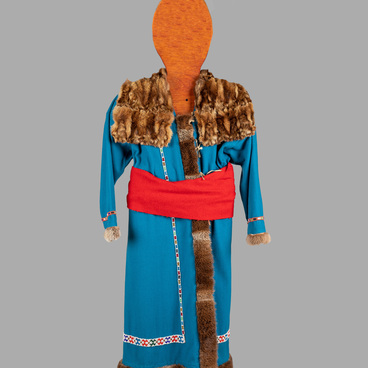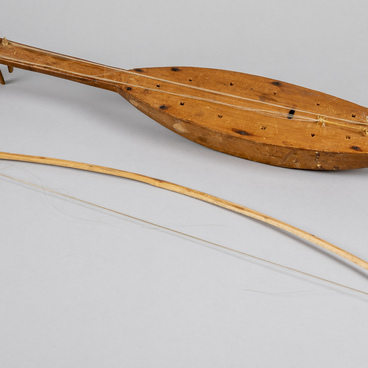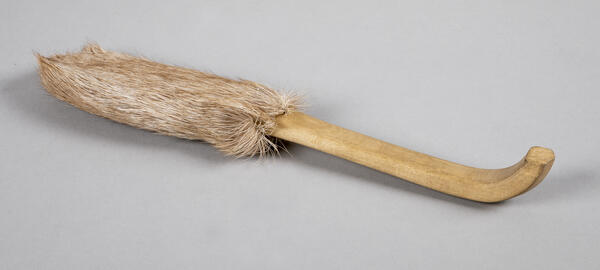Traditionally, a tambourine must be made by a person outside the shaman’s clan. Also, making it for oneself is not allowed, so in order to make the tambourine, one requires the help of a craftsman. Sometimes sacrifices are performed at a sacred place, where seven deer are slaughtered. The skin of one of these deer is given to the craftsman to create the tambourine.
The tambourine is made with regular household tools. To make one, it takes an experienced craftsman two weeks — three, if the time for gathering materials is considered.
Deer skin is soaked in water and stretched on a bird cherry hoop, which also serves as the frame. This frame is connected to an inner drum shell with 21 four-finger-long rods. The drum shell is made of cedar wood and is about as wide as the palm of the hand. The rods — called lappi — are inserted into holes drilled in the shell, forming the tambourine’s resonator.
The rods should not stick out inside the shell, so they are cut off. The skin is also cut and sewn to the drum shell. Before doing so, the craftsman makes three notches inside the shell that signify the gods: Torum (the Supreme God), Torum Poh (the son of Torum), Chet Kot Tavy Iki (the God who rides around the sky on a horse and looks after people’s affairs).
The handle of the Yugan tambourines is made of a Y-shaped tree branch. It is tied to the shell with buckskin cords so that each of the handle’s edges has a resonator rod in the center.
Because the bird cherry frame has an irregular shape, the tambourine is made to be more oval, thus resembling a human face.
The tambourine of the Yugan Khanty is hollow on the inside and is not painted.
When all the work is done, the customer must participate in the symbolic ritual of buying the tambourine. It is necessary for both sides to haggle over the price. There was once even a set of phrases necessary for this ritual, which were exchanged between the craftsman and the buyer until they agreed on some nominal price.
The master goes to the customer’s house, where they perform the most important ritual in the whole process of creating a shaman’s tambourine — “lekot vert”, or “paving the road for the tambourine”. Once inside the house, the craftsman takes the old tambourine, and the buyer takes a new one, and they begin to beat them at the same time. It is believed that by doing so, the shamanic power is passed from the old tambourine, which has served its time, to the new one. So the newly-born shaman gets an assistant for his difficult journey.







